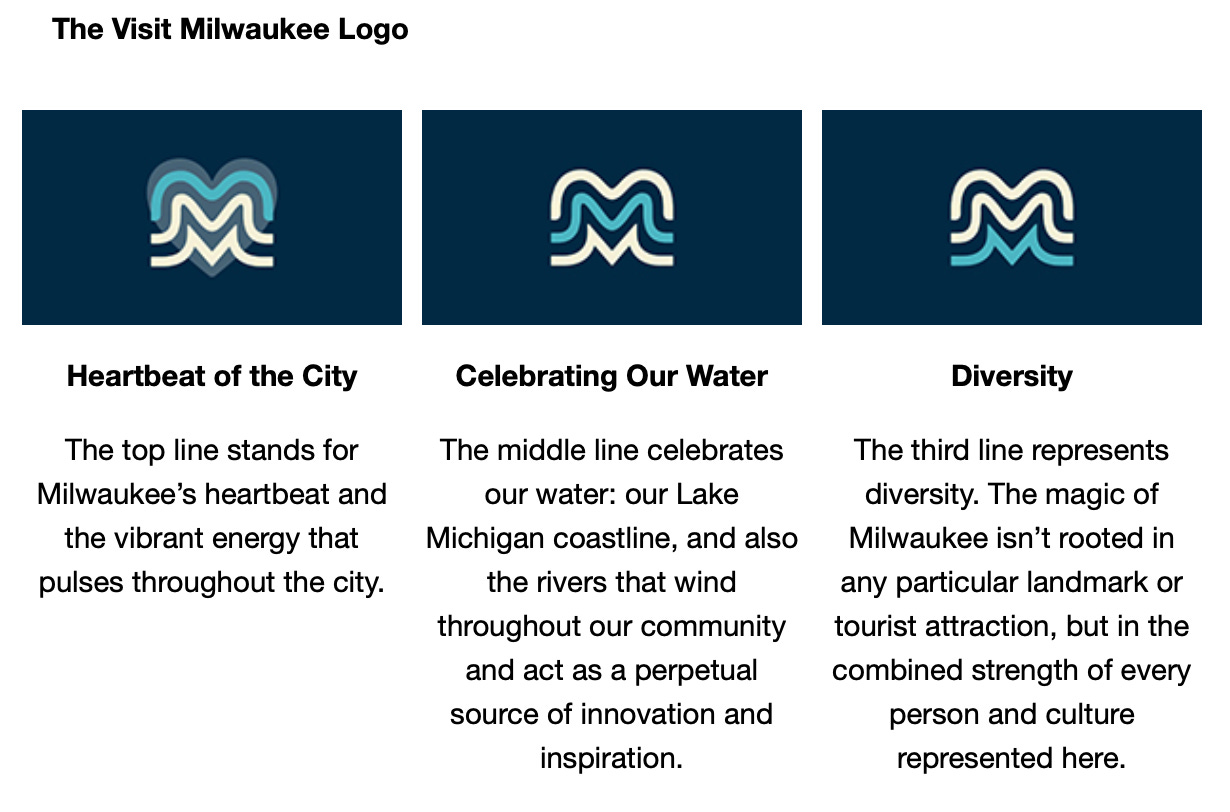In the advertising business, I worked with some of the deepest thinkers I’ve ever met. These are people who love a marketing challenge and welcome the task of peeling back the onion to uncover what a brand truly represents. They all had immense experience, and meetings were often deep discussions about strategy and creative direction, pop culture and trends, and where we were going to go for lunch.
We entertained the tough questions clients pay big agencies to answer.
What is the essence of a product? How do you find meaning in something whose meaning is not apparent? What truly differentiates a product? And what attributes of that product can the client say are solely their own? How can we create a real, lasting connection with our target audience?
These questions are even harder to answer when working for a client that offers experiences – like DMOs. DMO, for those who don't know, stands for Destination Marketing Organization – a catch-all given to various tourism and travel organizations.
What DMOs offer is a harder nut to crack than your average consumer packaged good, because it is incredibly difficult to define the essence of a place. As opposed to something like Clorox Bleach, which makes your whites whiter. Pretty simple.
But consider a place like, say, Milwaukee. That’s a steeper climb. What defines it? What makes it different? What is Milwaukee’s essence?
When working on travel and tourism campaigns, one of the things the agency I worked for spoke of often is what we called “the stuff.” These are the things 99% of destinations share. In cities and towns across America, you will find brewpubs, restaurants, water parks, lakes and rivers, festivals, fireworks, museums, and shopping districts. These things are everywhere. In outlying areas, you will find fishing, boating, camping, hiking, and whatever else people do outdoors.
The “stuff” is ubiquitous and can only be a differentiator if you contextualize it as such or need to go to that specific place to see it (Devil’s Tower in Wyoming, for example). The stuff does not define a place. It’s certainly part of it, but it doesn't hold any intrinsic meaning in and of itself. Many DMOs fall back on “the stuff” because it’s easy to do. Some of the tourism organizations I worked with did this. But the best ones did not.
The difference between “the stuff” and how people develop deeper connections to a place reminds me of two things. The first is an A24 film that came out a few years ago called “Aftersun” which chronicles a trip a father and daughter embark on. The film does an incredible job of showing what memories are made of – in that they are disjointed, sporadic, and grounded in specificity. For example, it’s not the hotel pool you remember, it’s the strange people you met in the hotel pool who opened you up to a few new things about life. Experiences are not things like pools. They are palpable interactions that happen to you at the pool that you don’t forget.
The second example is Disney, an organization that knows all too well how important it is to make meaningful connections to travelers. These commercials demonstrate how it’s not about the stuff – it’s about how a place can make a profound and lasting connection with human beings.
Yes, Disney is an easy example to cite, considering how universally known Disney is. But shouldn’t we all be aspiring to be Disney? If DMOs start thinking about their city or state as a place that can move people in ways they have not been moved, they will be on to something – the special sauce that can make tourism advertising resonate.
The problem is that the memorable things lie in the tiny details, like Aftersun and Disney so perfectly illustrated. Genericism is anathema to emotion. Emotion lies in a feeling, a touch, a kiss, a facial expression. It exists in the minutiae of life – the sand between your toes and the breeze in your hair. Emotions manifest in serene, quiet moments or an eye scanning the starry night sky.
Emotion also lies in profound language and some of the best videos inch into poetic territory.
The issue with conveying emotion is that it takes craft and requires talented creative people to deliver on making something that makes you feel something. This is generally expensive and is why we see many DMOs resort to the things that are easy to define – “the stuff.”
The other issue is that many DMOs are either government-run or are bogged down in a layered corporate structure where consensus wins. It is much easier to sell a board of directors on “the stuff” (definable) than emotion (hard to define). It is the reason why one of my favorite quotes is “There are no statues of committees.” Organizations have boxes to check and, gosh darn it, they will check them all, no matter how watered down it makes their message.
A case in point is the newly announced rebrand of Milwaukee, a place I have lived since the mid ‘80s. Considering my history in advertising, it’s always fascinating to me when an organization does a rebrand and I was excited to see how Visit Milwaukee viewed what I have come to know as an incredibly artful, eclectic, working-class, and industrious city.
Well, it certainly has a lot of “the stuff.” And it certainly checks all the boxes. But it lacks the magic I know to be Milwaukee. A stroll down Broadway in the Third Ward on a Saturday afternoon offers more energy and realism to what Milwaukee is all about. The music is subtle, the voice is dispassionate. It could be a spot for any mid-size city in the United States. Slap Columbus, Ohio on the end of it; few would know the difference.
The spot even dares to say “What you'll remember is how we made you feel” – a strange thing to say in a spot that makes you feel nothing. No emotion. No passion. It is generally frowned upon to tell people they will feel something. The trick is to actually make them feel something.
It violates another general rule: “Show it don't say it.” When you hear the closing words of the spot, “where fresh meets fearless,” you haven't seen enough to demonstrate either. Honestly, “where fresh meets fearless” sounds like an overly adventurous grocery store.
I received an email (press release) about the rebrand, and the email communicates that the new direction “was created with the input of thousands of Milwaukeeans from all areas of the community and is designed to be utilized by the community to create cohesive and inclusive positive branding to further elevate the destination’s reputation.” It goes on to say that this work was the result of “two years of research.”
The new logo, a series of shapes that comprise an “M”, is accompanied by a convoluted explanation of what the lines in the logo represent:
I was on a film shoot for a client a few years back and a slick PR team from Washington DC was at the shoot in a consultant role. During a presentation before the shoot one of the crisp suitted, coiffed PR pros said something I will never forget: “Explaining is losing.” And upon seeing these descriptions of what the layers of the “M” represent, this has all the earmarks of people listening to themselves talk. Upon looking at this I still have no idea how the top line represents a heartbeat, but that’s just me, I suppose.
The hard pill to swallow is that as much as organizations want to apply meaning to their work, the reality is that the consumer will always create their own meaning. And that’s the meaning that matters most.
It may be flippant of me to criticize the work from afar, and I get how the process and all the people involved in it spent a ton of time getting to where they got. But it would take one brave voice in a room to look at the work and sincerely ask, “Is this Milwaukee? Is this who we are?” I can't imagine anyone watching this and sincerely thinking, “Yes.”
Part of the rebrand includes partnerships with local influencers. And a video popped up on my feed that made me stop for a second. One of Visit Milwaukee’s influencers, Oby Nwabuzor, made a video about her version of Milwaukee, and how the city brings her life meaning. It has exactly what VM lacks – vision, passion, honesty, and most importantly, specificity.
Less stuff, more experience. More visceral from-the-heart honesty. Seeing this video reminded me that the real essence of a place like Milwaukee lies squarely within every person who lives here; their experience, their reason for embracing the city they can truly call their own. That is where the real meaning of Milwaukee lies. Every city has food, fireworks, and festivals. But there is only one Oby.
I have always thought that within every great campaign idea, the best part of it is the 15% that is hard to justify, the part that holds all the risk and all of the reward. And you have to have that 15% for something to be truly impactful. That 15% does not exist on any strategic document, or page of research, or sliver of input. That’s the 15% that turns communication into art. Not many clients have an appetite for it.
Clearly, Visit Milwaukee is one of those clients.
It reminded me of a campaign for Kentucky from about ten years ago. The State of Kentucky conducted a rebrand, and spent millions of dollars that ultimately led them to a new tagline, “Unbridled Spirit.” There were quite a few people that were unhappy with it, and took matters into their own hands, creating a new slogan for Kentucky – “Kentucky Kicks Ass.” The campaign went sorta viral.
I’m not sure that something like this is the answer for Milwaukee, but there is one thing I do know. “Where fresh meets fearless” is neither fresh nor fearless.




This does about the same job: https://www.youtube.com/watch?v=yXnPT1qH8qE
I like that part about finding "the stuff" when promoting tourism.
I'm still early in my advertising career but one of the frequent clients I write for is the tourism board for a Wisconsin lake town that—if I'm being honest about it—is Door County for Illinois people who can only handle 1.5 hours in the car.
4 times a year, they ask for a digital campaign that's "refreshed and different". After some back and forth, it always comes back to "Come here for the trails, a big lake and a boutique-lined downtown." You could slap the tourism logo of about 40 different cities/towns and it would read just the same.
I want to make great ads and sometimes that requires trying something new or approaching it in a different direction—something like highlighting that very unique feeling or experience a visitor will have. As a young copywriter and aspiring CD, how can convince the team/client that we should try something different than "the stuff" even though it works*?
*the client is happy with running what they've always done and will pay us to do just that.